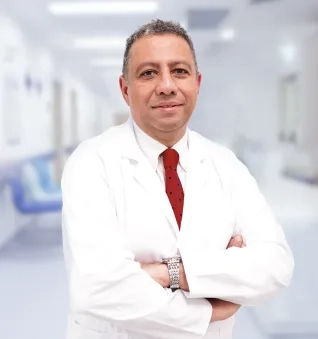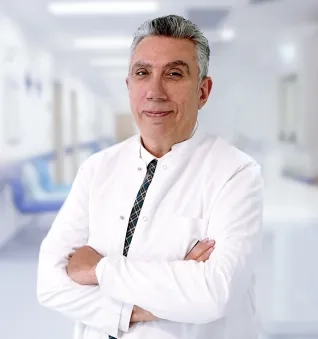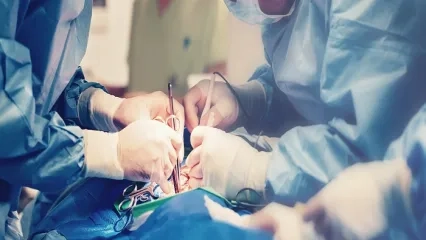Alo Yeditepe
Alo Yeditepe
Drug Treatment is Priority Leg Vein Obstructions
Most often, leg vascular occlusions, which give symptoms with momentary pain while walking, are tried to be controlled with drug treatment in the first place. If the problem does not go away with medical treatment and lifestyle change, approaches such as a balloon, stent, and surgery come into play this time.
Vascular stiffness occurs in the vascular system that surrounds the body; most often, those that feed the heart, neck, and brain are seen in the veins and legs. While some patients have it in both the heart, legs, and brain veins; in others, it can only occur in the legs. Vascular occlusions in the leg are most evident with the pain that occurs while walking. Therefore, when such a symptom appears, it is necessary to consider that there is a problem in the leg veins. The factors that cause vascular stiffness also apply to leg vascular occlusions. Yeditepe University Kozyatağı Hospital Cardiovascular Surgery Specialist states that it is also possible to encounter vascular occlusion in patients with commonly known risk factors such as smoking, high cholesterol, and familial vascular disease history. Patients sometimes do not care about the pain caused by walking. However, in the future, this symptom can be accompanied by wound opening, pain while resting, and even consequences that can lead to limb loss."
Symptoms of Pain While Walking
Pain in the leg veins can sometimes be a sign of a general vascular disorder. In this case, the heart and neck veins should also be examined. Our specialist says that patients with problems in the leg veins are often distressed by the heart vessels. If pain stops the person while walking, it is important to suspect this and make the necessary examinations. The pain we mentioned occurs while walking disappears when you rest a little, then it is felt again. The person pretends to look at the showcase so as not to notice when the pain comes. This is where the term ‘showcase disease 'comes from. There may be other reasons for this, but it is most often due to vascular disorders.”
There is No Sickness, There Is Patient
In the diagnosis of vascular occlusion, sometimes ultrasonographic and sometimes invasive methods such as angiography are used. If the patient has pain that occurs only while walking, if this does not affect his social life, and if he does not have a condition or wound that may cause limb loss, drug treatment is applied first. If the desired result is not achieved, two options come to the fore this time. With the balloon or stent, the veins are opened, or the leg is surgically bled. Although not every vascular occlusion needs to be opened, our specialist stated that it should be treated and also added: “In such disorders, the approach to the disease that affects life, namely the person, needs to take care of himself. It is important to use risk-reducing drugs regularly and make some changes in your life. For example, the patient's heart vessel opens, but if the person continues to smoke and does not use their medication regularly, the risk of a heart attack increases. Therefore, the treatment must be done, the patient must be encouraged to change his/her life and the importance of this must be emphasized! In cases where there is no response with drug treatment, interventional treatment is needed: surgery, balloon, or stent... Apart from these, there are also several other methods with atherectomy devices. Therefore, which treatment method is more accurate and a good option for the patient varies depending on both the person and other health problems and several factors. This process should be evaluated individually with the logic that there is no disease, there is a patient. If the obstruction is in the upper part and short, more stents are preferred. Surgery comes into play in stenoses that are very tall and have been present for a long time. But there is a point here: Treatment with a balloon or stent should not destroy the patient's future surgical chance. ”
Beware of These Suggestions!
Especially people who are known to have a family history of heart or vascular disease should definitely consult a specialist if they have pain that forces them to stop while walking. This may indicate an underlying vascular disease, if not 100 percent. However, Yeditepe University Hospitals Cardiovascular Surgery Specialist says that sometimes similar problems can be seen in some vein diseases with congestion in the spinal canal (narrow canal disease). Our specialist explains the measures to be taken to protect vascular health as follows: "Since genetic factors cannot be changed, it is of great importance for the person to control the blood pressure problem, if any, to eat Mediterranean type, to quit smoking and to exercise in terms of vascular health."
Press Coverage: gazetevatan.com | haberler.com | mynet.com | timeturk.com | aksam.com
This content was prepared by Yeditepe University Hospitals Medical Editorial Board.
”
See Also
- What is a Bypass? How is Bypass Surgery Performed?
- Surgical Treatment of Heart Valve Diseases
- He Went to the Hospital with Leg Pain, Discovered His Carotid Artery Was 95% Blocked
- Does an Aortic Aneurysm Show Symptoms ?
- What is an Aortic Aneurysm? How is it treated?
- Aortic Aneurysm
- You Can Be Protected from Varicose Veins During Pregnancy
- Cardiovascular Diseases
- Pain in the Legs May Be a Sign of Vascular Congestion
- Which Diseases Can Swelling in the Legs Indicate?
- Stay Away from Depression and Protect Your Heart!
- Do Not Let Varicose Veins Be Your Nightmare During Pregnancy!
- Frequently Asked Questions About Varicose Vein
Alo Yeditepe





